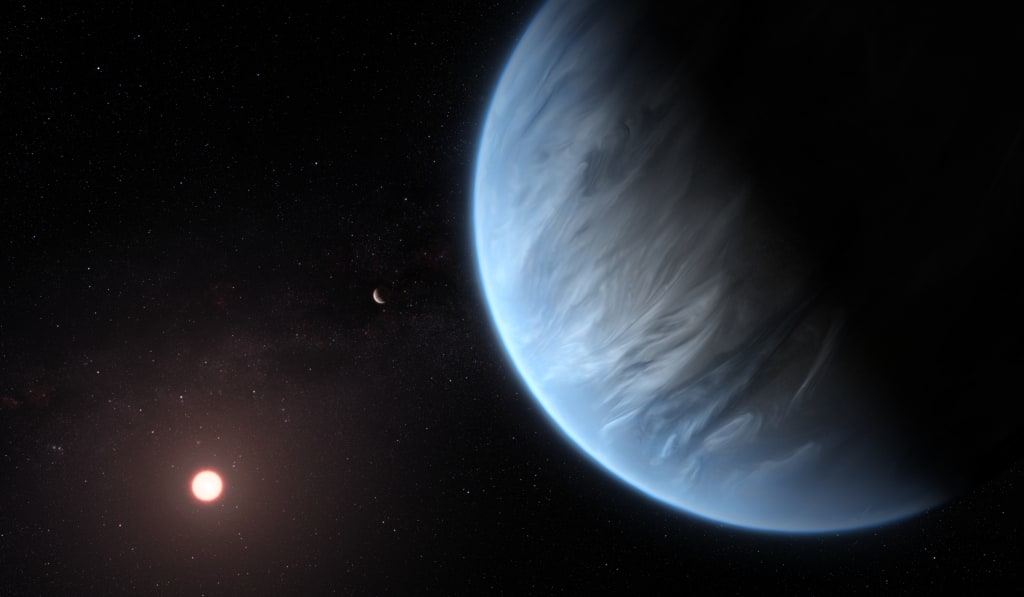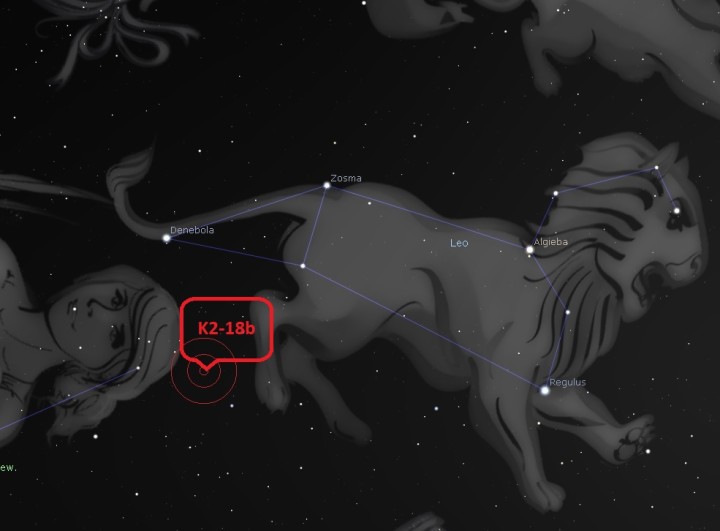
Did we really find a habitable planet? Not by a long shot.
In the last few days, the world of science news has experienced fantastic excitement.
Two research groups published their results about an extrasolar planet. And, based on their result this ‘Super-Earth’, which orbits its star in the ‘habitable zone’ could have water molecules in its atmosphere.
Many news outlets mention this discovery as the first time that we have found an exo-planet with the water on it, and so forth an excellent nominee for a habitable planet.
However, when you look closely to this story, it seems that this excitement was premature in some aspects.
What did scientists find?
On March 7, 2009, Kepler Space Telescope launched to commence its mission as a planet hunter space telescope.
This space telescope consistently observed more than 150,000 stars in a small patch of the sky. Using its sensitive photometer, it was looking for small drops in the light curves of these stars. These temporary reductions in the light curve could be a clue of a planet which is orbiting around that star.
During nine years of its mission, Kepler confirmed more than 2000 exoplanets. From giant gaseous Jupiter-like planets to the rocky planets with the size between Earth and Neptune or Super-Earths.
In 2015 scientists discovered a planet around a star 110 light-years away from the Earth.
This planet was orbiting a star called K2-18 in the direction of constellation Leo, and the newly discovered planet called K2-18b.

K2-18b in the sky (image created by Stellarium)
This was an exciting planetary system. The parent star is a kind of star that is known as a Red Dwarf. These are the smallest and coolest stars of the main sequence.
The main sequence is an evolutionary phase for the stars. When a star reaches the stable stage of its life, it enters the main sequence, and spends most of its life on it. In this stage, the star starts burning hydrogen at its core, and creates helium by the process of thermonuclear fusion.
Red Dwarfs are very common in the sky. Most of the stars—at least in the Sun’s neighbourhood are Red Dwarfs. However, they are tough to catch. One reason is that they are smaller than our sun. Also, because of their low temperature, their highest emission is near the red and infrared part of the spectrum.
This wasn’t the first time that astronomers discovered exoplanets around a red dwarf. However, this time, this super-earth was in a phenomenal distance from the parent star. It was just inside the habitable zone of the K2-18.
What Is the Habitable Zone?
The simplest explanation for the habitable zone is a belt around any star that, if you have a planet inside that, it could support the existence of liquid water on its surface.
For example, in our solar system, Mercury is too close to the sun to have liquid water on its surface. Therefore it is not inside the habitable zone of the Sun.
So the habitable zone is just an imaginary area that has a temperature that we find it tolerable. It doesn’t mean that if you find a planet inside the habitable zone, it definitely should have liquid water on it.
Both Venus and Mars are inside, or very near to, the habitable zone of the sun. However, none of them—at least in our time—has liquid water on their surface.
On another hand, both Europa, around the Jupiter and Enceladus, around the Saturn, are hosting vast oceans of liquid water under their surfaces. Moreover, even it is possible that they support some primary life. Both of them are beyond the habitable zone of the sun.
The case of K2-18b
K2-18b with a radius of about 2.7 of the Earth is a super-Earth planet. It orbits K2-18 at about 21.38 million km. In comparison, Earth median distance from the sun is about 150,000,000 km. Moreover, the minimum distance of Mercury—the closest planet of the solar system to the sun—to the Sun is about 46 million Km (more than twice as the orbit of the K2-18b around its parent star.)
The reason that, despite this close distance to the star, K2-18b exists inside the habitable zone, is the small size and low temperature of the red dwarf.
The radius of this star is just about 0.4 radius of the Sun, and its surface temperature is about 2000K (Sun has a surface temperature around the 6000K). So, the habitable zone of this star shrinks around it. Moreover, it is worth it to say that this planet orbits its star in just 33 Earth days.
Water in the atmosphere of K2-18b
The Kepler space telescope, besides discovering hundreds of new worlds, created an excellent list for further investigations. Planet hunters and astronomers now could use its discovery to target specific kinds of planetary systems to study them more closely.
A few years ago, Hubble Space Telescope used its WFC3 (The Wide Field Camera 3) instrument to study this planet more closely.
These data, set in combination with a data set from the Spitzer space telescope, were the primary source for two groups of scientists to look for the composition of this planet’s atmosphere.
Two separate analyses by researchers at Université de Montréal and University College London (UCL) show that it is very likely that water molecules exist in the atmosphere of this planet.
The UCL group (which their results have published in Nature Astronomy) announced that their discovery has a statistical significance of 3.6 standard deviations. In other word, they are 99.7 percent sure about their findings.
So we found water in a habitable planet?
Maybe yes, but it is more likely that the answer would be No.
First of all, this finding should be revisited and tested again by other groups and other researchers. There are a few critical questions about this system.
For example, the reduction in the light curve is different in Kepler and Hubble observations. There could be some logical explanation about it (For example existing of another planet in the system), but it required more studies…
The second issue is that even if all the calculations are right, and also we can be sure that the planet is a rocky planet, and not like Neptune; still, we have a planet with the surface temperature between -8 to 5 degrees centigrade.
Yes, these are survivable, and even pleasant temperatures, but we need to know more about the atmosphere of this planet to conclude its environment.
One other problem is that a planet in this distance from a red dwarf tends to be a tidal lock with its parent star.
That means that like the Earth-Moon system, only one side of the planet always will be toward the sun, and the other side of it would be in a permanent dark. And this makes the situation very hard for life.
However, there are other issues too.
Because of the closer distance to the sun, this planet could be the subject of a powerful storm of solar winds, and bombarded with the high particles from its star. If it wants to support life, this planet should have a powerful magnetic field.
In short, there are many things that we don’t know about this planet. Also, even if we did have answers to some of these questions, we still couldn’t be sure about the habitability of this planet.
Life is a peculiar issue.
The only reason that we call that specific distance from a star, a habitable zone, is because we are trying to find a very similar life to us. You can have the life with the base of ammonia instead of water, and even here on our small planet, life shows us that it could bloom and evolve in a very hostile situation.
The discovery of water molecules in the atmosphere of K2-18b—if confirmed by other research groups too—is a significant step forward in our search for finding life and a habitable planet.
However, this discovery doesn’t mean that we find the habitable planet and K2-18 system does not remotely look like our solar system.
We still have a long way to go to find the holy grail of astronomy: Finding life somewhere outside the Earth.
